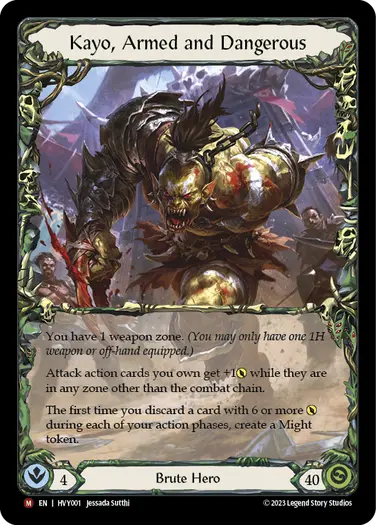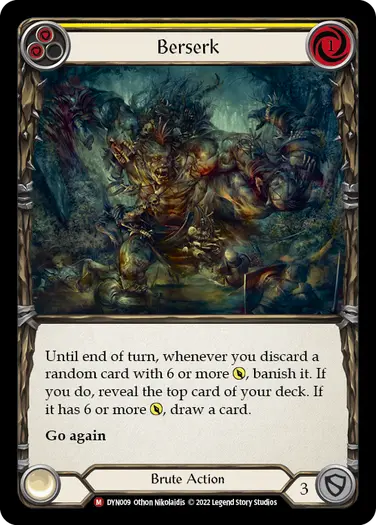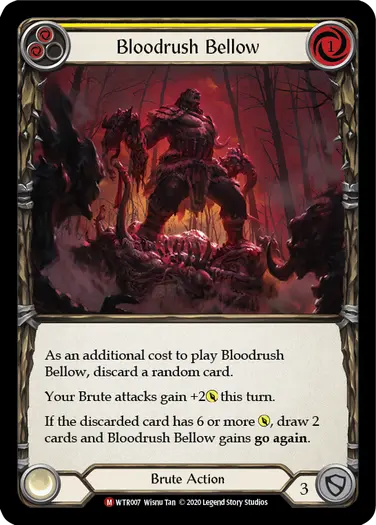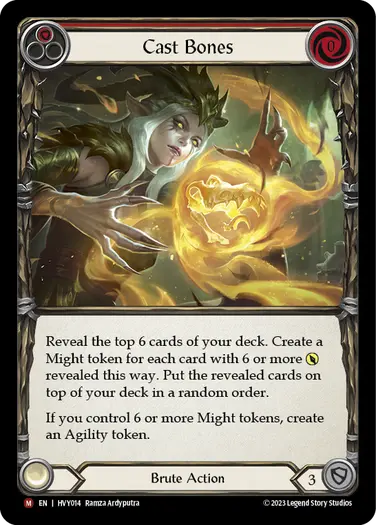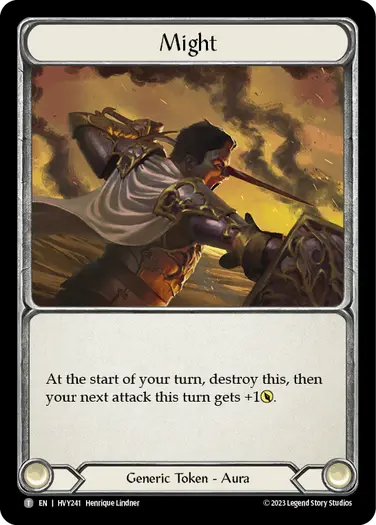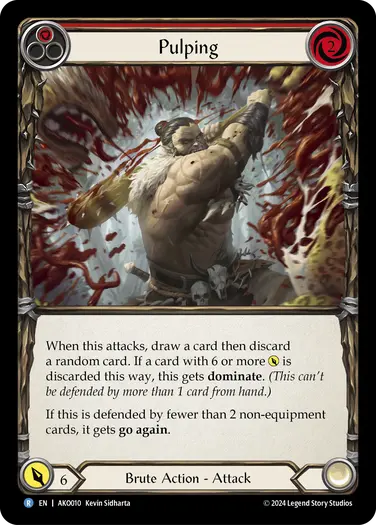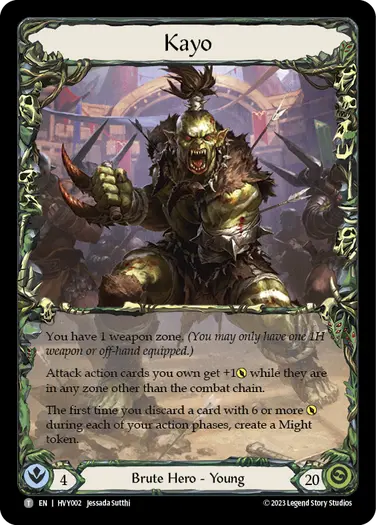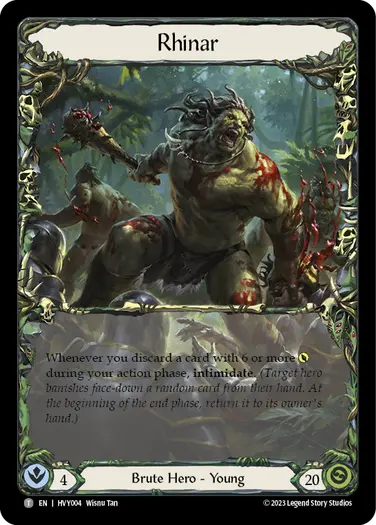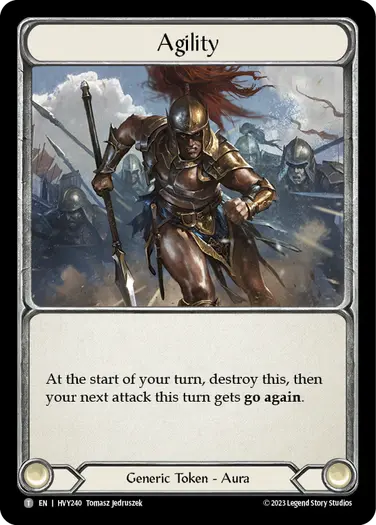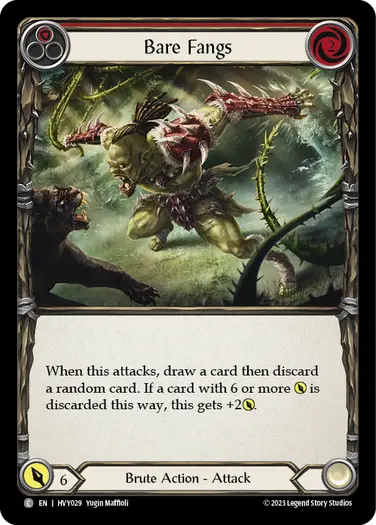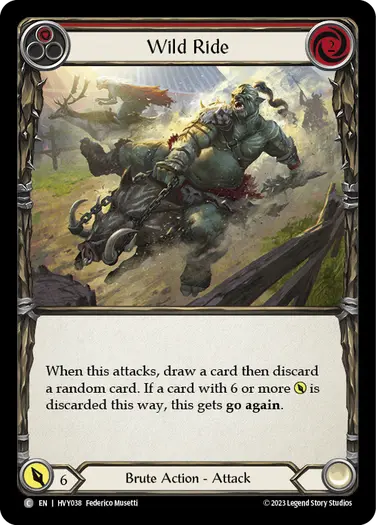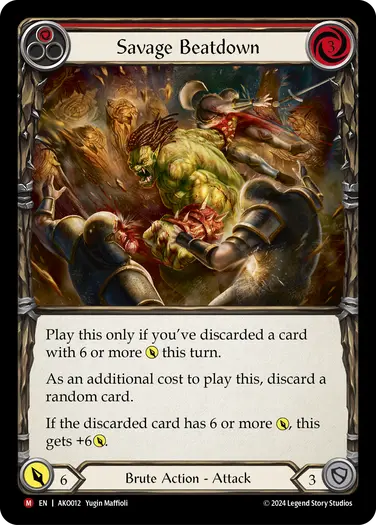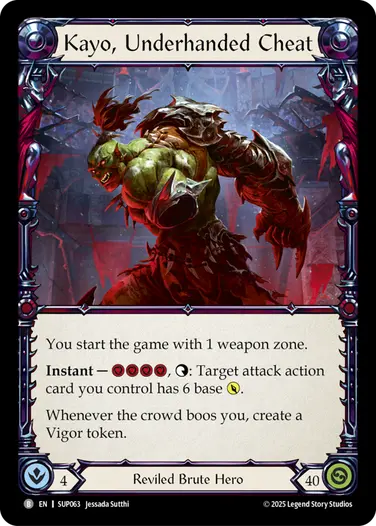Legend Story Studios developer Karol lifts the curtain of the Dev Room so we can take a peek behind the scenes. Learn about the work that went into designing, testing, and evolving the iconic cards you know and love today. Sometimes all a card needs to be great is a Dev Touch!
With Super Slam on the horizon, allow me to guide you through "preview season" for game developers. We don't get funny spoiler videos, speculations, and the thrill of discovering the set card by card. It hits us like a truck. All at once, the whole set. But more importantly, before diving in, we have a presentation with the designer of the set. So far, it's been James White each time. While it might be a different process of delving into new Flesh and Blood cards, the excitement and curiosity in the team remains largely on par with players in the real world.
For Heavy Hitters, we sat down for the presentation and the first thing we could see was the inspirations for the Deathmatch Arena. From the beginning it felt like a true meat and potatoes set—a return to good ol' melee Flesh and Blood. Simple, yet satisfying. There were a lot of aspects I was resonating with. Having started playing the game when Welcome to Rathe came out, I liked the simplicity of what it offered. Also, with Rhinar being my first main hero, I was excited to finally be a part of the development of a new Brute, from start to finish, for the first time. And I won't lie, my jaw dropped a bit when I saw his hero ability:
You have 1 weapon zone.
Attack action cards you own get +1{p} while they are in any zone other than the combat chain.
I bet there were lots of Brute mains who would have given an arm and a leg to be able to play unlimited blue 6-powers in their decks… but I didn't expect design to take it so literally. There was a pause as we all tried to absorb and process all the possibilities the new Brute provided. I remember looking around the room, making eye contact with a few other developers and instantly having the same idea...
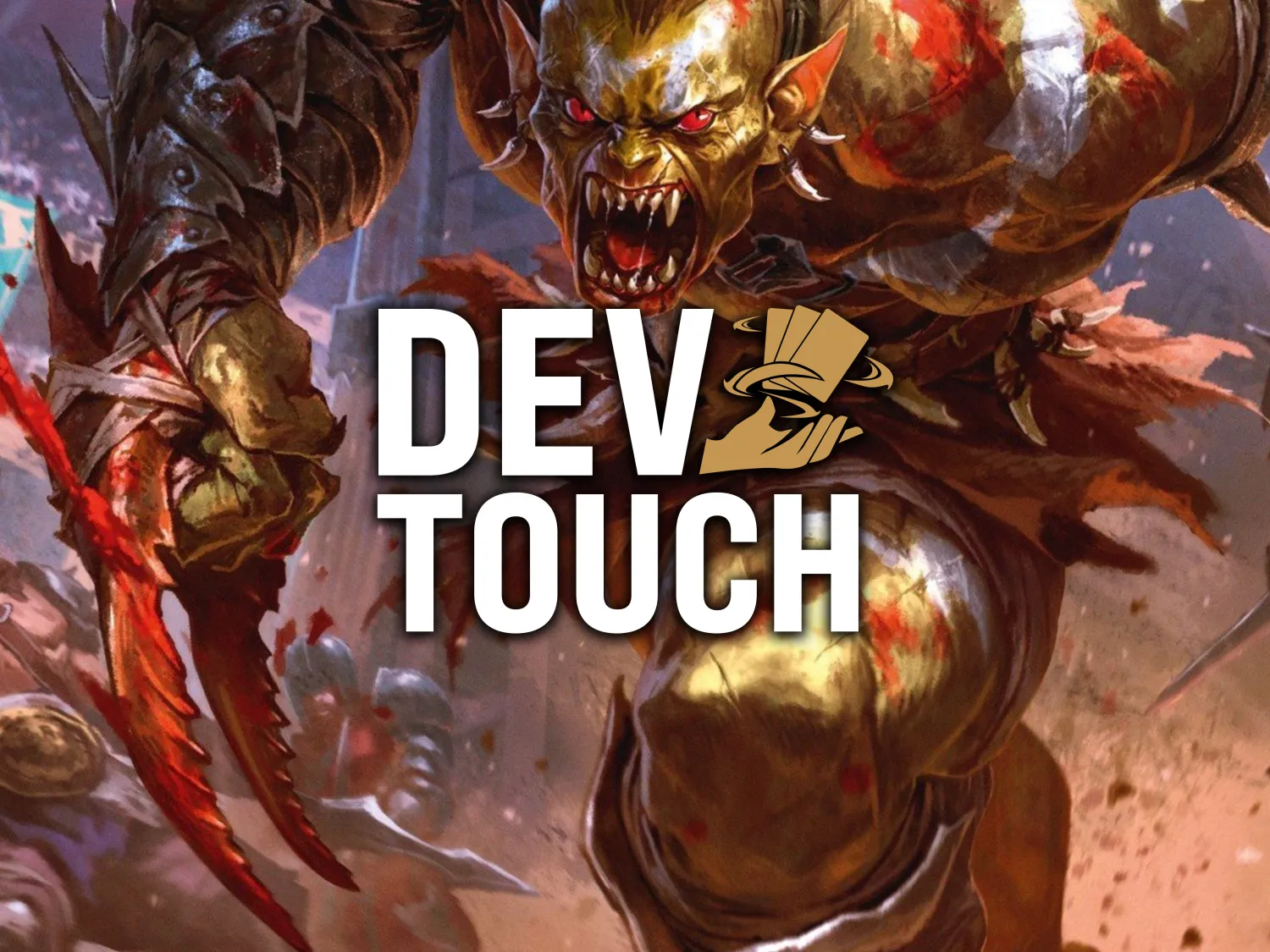
Berserk. We all wanted to limit test Berserk.
We went through the overview for other classes, all the themes and goals for the set, but I'm convinced most developers couldn't wait to get building Kayo. Having played Rhinar for years, I had only dreamed of unlocking the power of unlimited blue 6-powers. From safe Wild Rides, to consistent Bloodrush Bellow turns, it was hard to judge how strong Kayo was going to be, but we couldn't wait to get started.
Most of our initial lists trended towards the same goal—play Berserk, ideally backed by Bloodrush Bellow, and see how much damage it could output. It quickly became apparent to us how bonkers these play patterns would have been with an additional Mandible Claw. Some of these lists were spitting out 40+ damage in a turn!
However, not everyone tried to combo with Berserk. Anthony Balmes was brewing a more traditional midrange deck. Nothing exceptionally fancy, just 57 attack action cards with 6 or more power and three copies of Cast Bones. At the time, Cast Bones just made Might tokens, with 6 being the maximum. The deck didn't have the same flashy plays of the Berserk decks, but it did highlight some issues we started to notice.
Unlike Rhinar, Kayo did not have any inherent evasion like intimidate, and could struggle to close out games. Decks could often pivot to fatigue and try to stop each point of damage presented to run the Kayo out of cards. This was an issue for a deck that wanted to draw and discard lots of cards throughout the game. Despite the Berserk deck being able to present high damage bursts in a single turn, it faced the same problem—decks could pivot to hard defense and even a strong combo turn might not be enough to put the opponent in the danger zone. Pulping was the main pseudo-closer, but all it took was a defense reaction in arsenal to completely shut down those plays.
The same thing happened in limited testing. Kayo had smooth play patterns, but just couldn't close out games in the same way Rhinar could. There were distinct drafting lanes between the two heroes, yet Kayo was much easier to fatigue than Rhinar.
After sending through our feedback to the design team, we got an updated Kayo—he now created a Might token the first time he discarded a card with 6 or more power during each of his action phases. The idea was to mirror Rhinar's hero ability, with the apex predator being the intimidate-coded Brute, and Kayo being the Might-coded Brute. It also fit with the Heavy Hitters theme of Might being one of Brute's tokens. But it did have flow-on effects in both limited and constructed.
In limited, Kayo started to outperform Rhinar and became the clearly better Brute. Also, compared to other heroes, when the cards aligned, he could absolutely steamroll Warriors and Guardians. There was a point in time in which Kayo felt like the strongest hero by far.
In constructed, it felt like the Berserk decks did gain a bit of reach, but the change didn't move the needle significantly for them. However, Anthony's midrange deck started to feel a lot more threatening. The incremental value generated with Might tokens would stack up over time and create enough of an engine to make the deck a strong midrange shell.
Cast Bones continued to feel slightly underwhelming, especially in a deck that was solely designed to maximise the value of it. For a Majestic, we felt it needed a little bit more juice. Jason Chung suggested we give the card a higher ceiling, and let it create an Agility token in addition to the Might tokens, if all 6 cards revealed had 6 or more power. This change slowly got our Kayo builds to move away from the combo Berserk builds in favour of the more value-driven Cast Bones builds.
While constructed testing was starting to hit the sweet spot, limited still felt a bit off. The deck was putting in worrying results and made us consider the nerfs we could implement to bring Kayo down a peg. The first one we ended up implementing was reducing his starting life to 18 / 36.
This made sense thematically—he lost an arm, hence his total life was reduced from 19 to 18. It also produced a clear distinction in limited between the two-armed / 20 life Rhinar, and the one-armed / 18 life Kayo. Kayo took up the role of the more high-risk, aggressive Brute, while Rhinar was the steadier, control-leaning Brute.
In constructed, Kayo still put up good results in terms of win rates. His newly added Might token creation felt like a reasonable justification to let him start at 36 life. With Bare Fangs giving him access to virtual 2-card-9's, and Wild Rides allowing him to go wide, the deck could keep up with some of the other aggro decks in the format. With the Might token each turn and cards like Bloodrush Bellow and Savage Beatdown, Kayo had tools to combat decks that wanted to block him out. Yet it wasn't easy to get an accurate gauge on his exact power level.
The biggest issue with testing high variance decks is they need a large sample size to get an accurate understanding of where they are at in terms of power level. We tested a range of builds, from the Berserk builds to more traditional value based strategies, and while Kayo did land in an acceptable place power level wise, there was that trepidation that in the end he wouldn't make enough of an impact to be considered a legitimate threat. There have been instances in which competitive players valued consistency over variance-based decks. If the juice wasn’t worth the squeeze, Kayo might not have been a consideration in higher level play. We ended up making a call to increase his life total back up to 40.
While it worked well in constructed, this had a flow-on effect on limited. Back we went to readjust young Kayo to 20 life. In retrospect, this was a massive learning for the development team in terms of using life total as a balancing lever for power level. The push and pull between limited and constructed put us in a tough to navigate scenario. When the set was released, in constructed we were right on the money. The real risk was releasing a Brute that ended up underwhelming. What Kayo has done is given the Brute class a solid spot in the limelight, with a vast section of the player base still reminiscing on the Heavy Hitters metagame as one of the best Classic Constructed has ever had!
Now, with Kayo making another appearance in Super Slam (aka "Cheato"), I can wholeheartedly say that he single-handedly became my favourite take on a Brute. The cross between the Brute class and the Reviled talent has been a challenge for the development team—a story for another time, but the finished version provides a unique take on value in Flesh and Blood and I cannot wait for you to explore it yourself!
